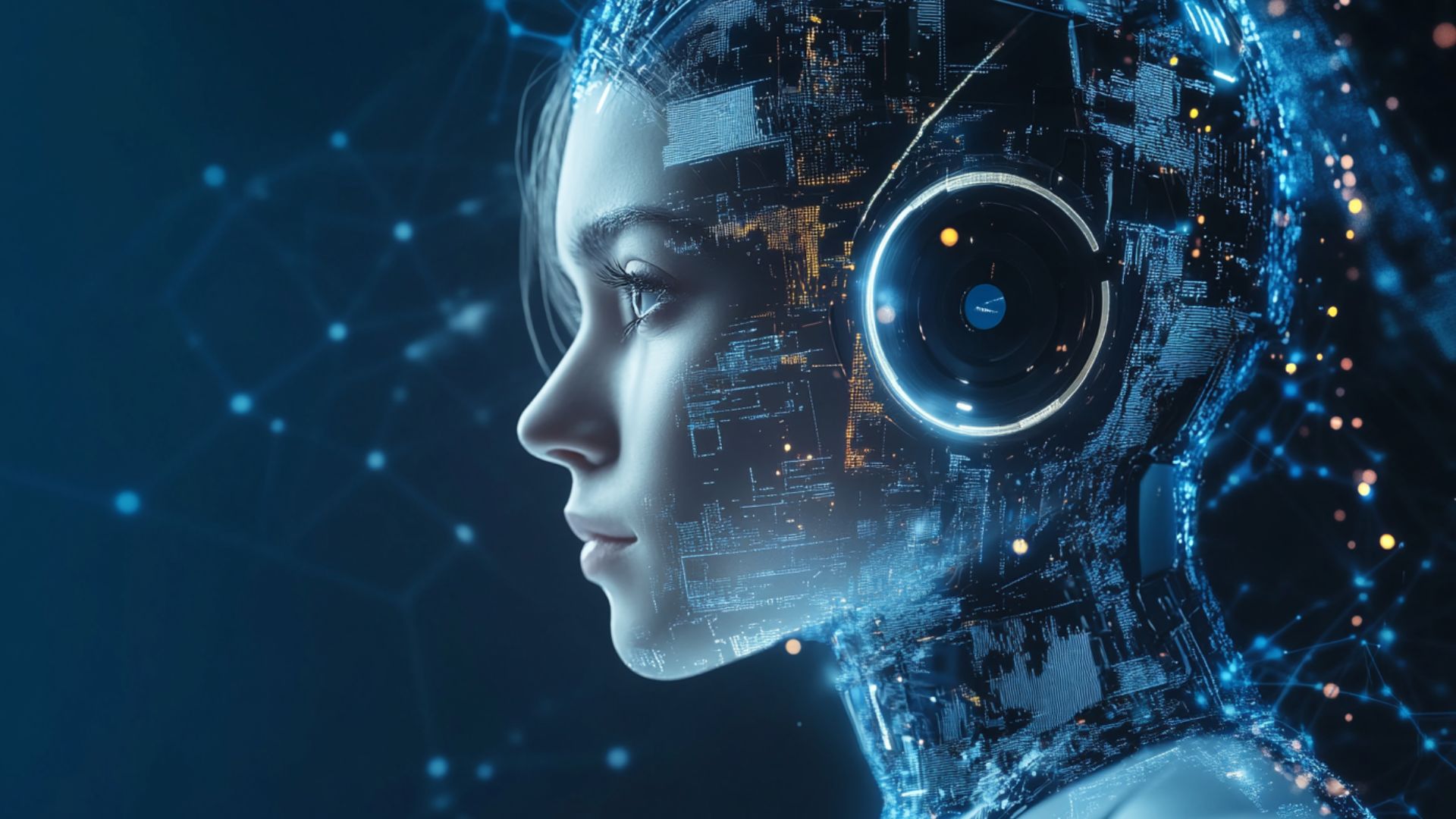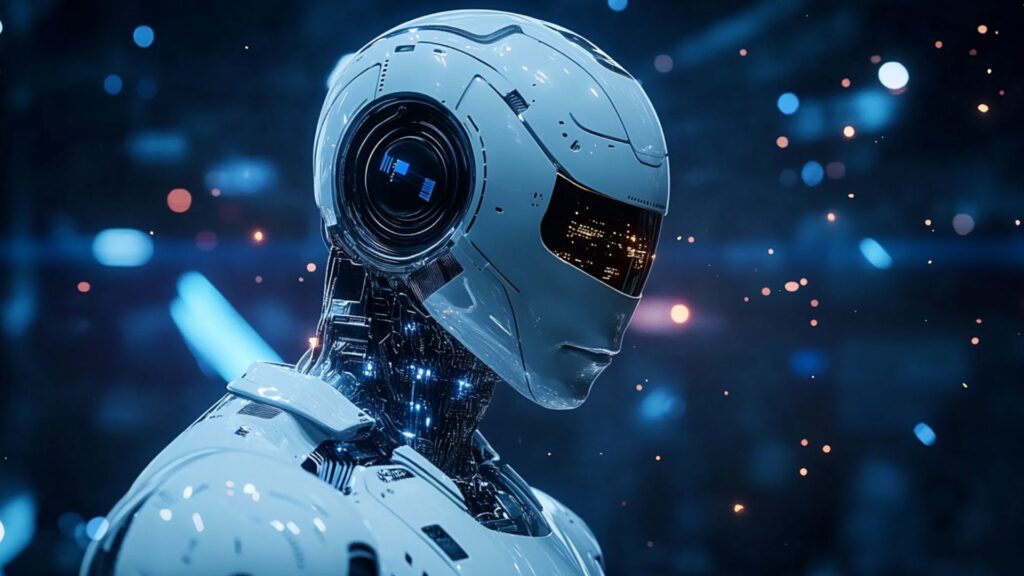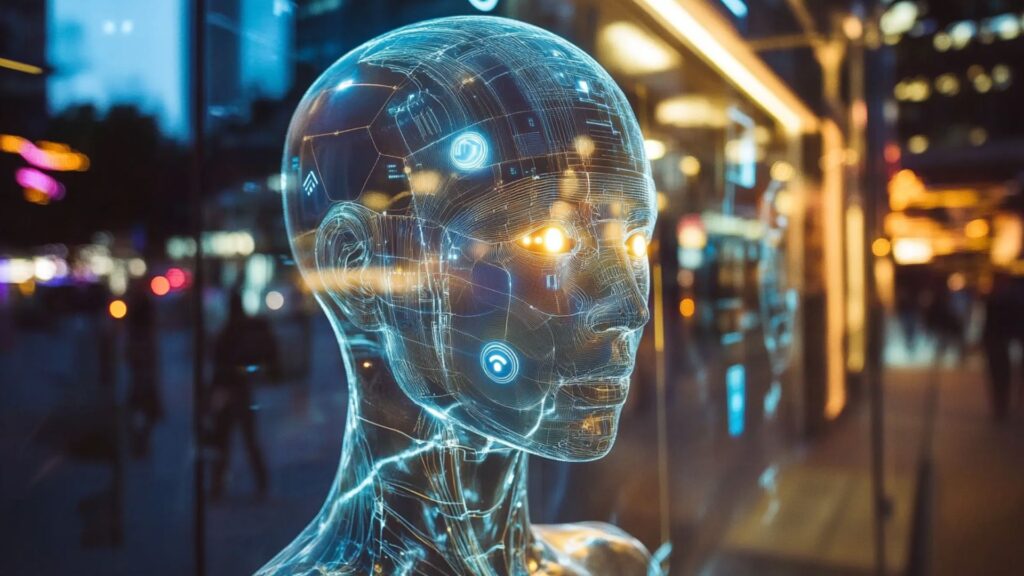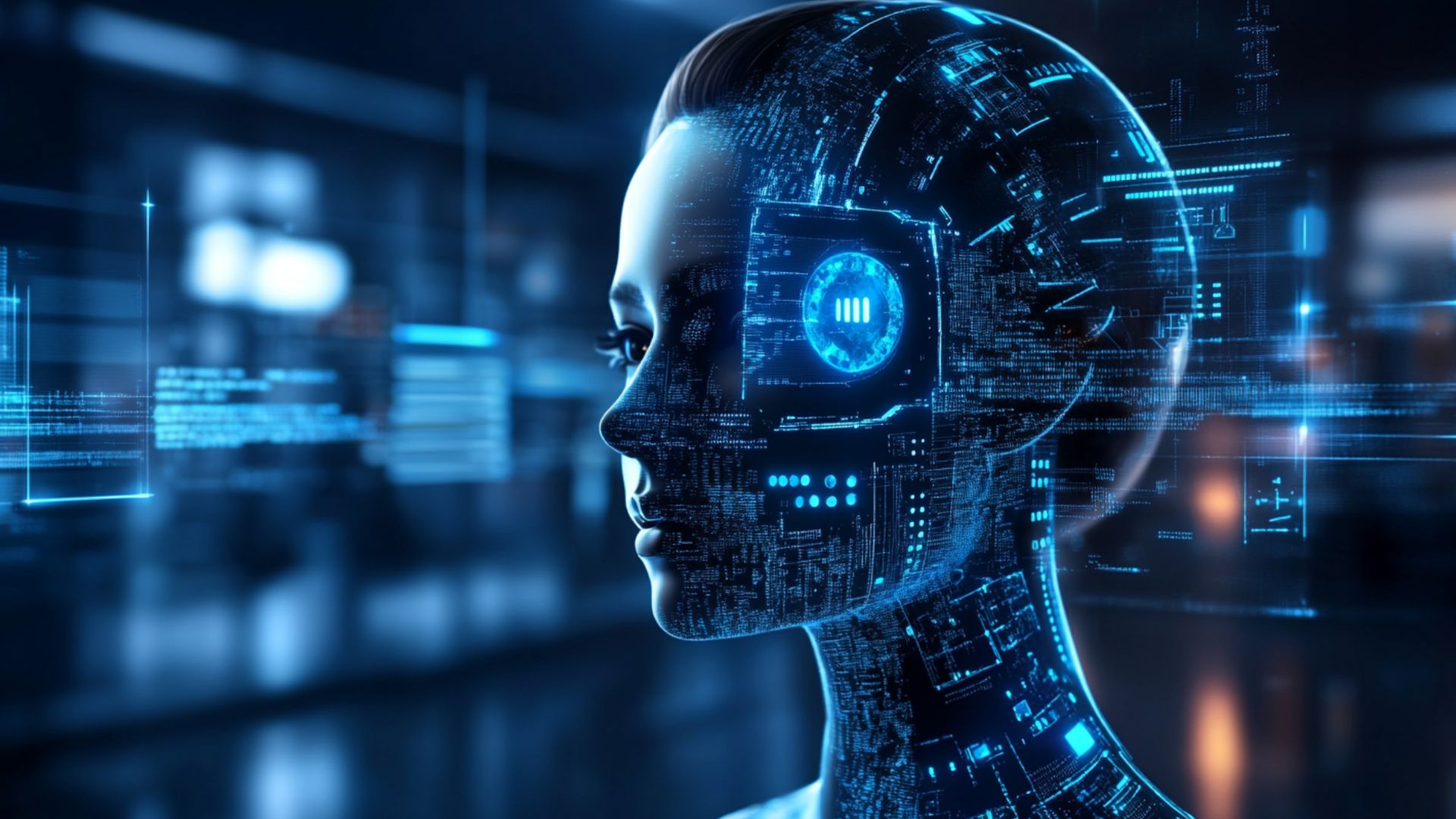What are AI Agents? Definition, Examples, and Types

AI agents are autonomous systems that perceive their environment and make decisions to achieve specific goals. They process data continuously and adapt to changes while acting independently or collaboratively. These intelligent systems serve as fundamental building blocks of modern artificial intelligence applications.
AI agents enable complex tasks by combining specialized components with decision-making processes. They power real-world applications including autonomous vehicles that navigate roads safely and chatbots that provide instant customer support. Business decision-making tools use AI agents to optimize strategies and improve efficiency.
Their ability to act intelligently makes AI agents essential in today's technology-driven world. AI agents come in various forms including reactive agents that respond to immediate stimuli. Learning agents improve through experience while multi-agent systems involve multiple agents collaborating to solve problems.
This guide examines the definition and real-world applications of AI agents. We'll explore key types and highlight their roles in shaping contemporary AI systems. By understanding how AI agents work, we gain insight into their innovation across industries. They transform how we interact with technology from transportation to customer service.
The Core Concept: How AI Agents Work
AI agents operate through a continuous perception-action loop that enables real-time decision-making. They perceive their environment, process incoming data, and take specific actions to achieve goals. The environment provides input such as road conditions for autonomous vehicles. The AI agent analyzes this data to respond appropriately and avoid obstacles.
The intelligent agent model includes three essential components: sensors, decision-making processes, and actuators. Sensors like cameras or microphones collect environmental data from surrounding areas. The decision-making process interprets this data using algorithms or neural networks. Actuators such as motors or speakers execute actions based on these decisions.
Three key features define an AI agent:
- Autonomy: They operate independently, making decisions without requiring constant human input.
- Adaptability: They adjust to changing environments and learn from new data to improve performance.
- Goal Orientation: They pursue specific objectives and work to optimize outcomes continuously.
Understanding what AI agents are enabled to solve complex problems efficiently while adapting to conditions. In real-world applications, this model drives innovation across multiple sectors.
In autonomous vehicles, AI agents process sensor data to ensure safe navigation. In chatbots, they interpret user queries to provide relevant responses. In business tools, they analyze data to optimize strategies and inform decisions.
Understanding how AI agents work helps us appreciate their transformative impact across industries.
Environment and Perception in AI Agents
AI agents interact with their environment through sophisticated perception systems using sensors to collect data. They transform real-world inputs into digital signals that inform decision-making processes. This enables AI agents to respond effectively to environmental changes and user requests.
Sensors vary significantly depending on the specific application and use case requirements. Cameras capture visual information while microphones detect sound patterns and software processes text data. Each sensor type provides different information that helps AI agents understand their surroundings.
Perception is critical to understanding what AI agents are. For example, chatbots process text inputs from users to understand questions. Autonomous robots use cameras or LIDAR sensors to detect objects and navigate safely. Financial AI agents analyze market data including stock prices and trading patterns.
AI agent perception by type:
| Agent Type | Environment | Sensors/Inputs | Data Processed |
| Chatbot | User conversations | Text input systems | Natural language queries |
| Autonomous Robot | Physical spaces | Cameras, LIDAR sensors | Visual data and distances |
| Financial Agent | Stock markets | Market data feeds | Prices and trading trends |
The collected data is converted into digital formats for processing and analysis. Chatbots transform user text into tokens for natural language analysis. Autonomous robots convert camera images into pixel data for object recognition. Financial agents use numerical feeds to track market trends and identify opportunities.
This digital data fuels the decision-making process and enables appropriate responses. Accurate perception ensures AI agents respond appropriately to environmental changes and user needs. Misinterpreting data can lead to serious consequences, such as missing obstacles or poor decisions.
Decision-Making and Action Mechanisms
An AI agent is a system that perceives its environment, makes decisions, and takes actions. Agentic AI refers to autonomous systems that make proactive decisions and take action. This happens through reasoning, learning, or optimization with minimal human intervention.
An AI agent make decisions using different approaches:
- Rule-Based Systems: Follow predefined rules and conditions to determine actions. If temperature exceeds 80°F, the system activates cooling automatically.
- Learning-Based Systems: Use machine learning algorithms to adapt and improve from data over time. Neural networks predict stock market trends based on historical patterns.
- Optimization-Based Systems: Work to maximize specific goals or minimize costs through calculated decisions. Route optimization helps delivery drones find efficient paths.
An AI agent produce various types of outputs:
- Text Responses: Chatbots answer customer queries and resolve complaints through natural language responses.
- Physical Movement: Industrial robots perform assembly tasks and manufacturing operations with precision.
- Financial Trading: Trading algorithms execute buy and sell orders based on market signals.
- Control Signals: Smart thermostats regulate home temperature and environmental control systems automatically.
- Content Generation: AI systems write articles, generate images, and create multimedia content.
Efficient decision-making significantly enhances agent performance and effectiveness. Rule-based systems are fast and reliable but remain rigid with limited adaptability. Learning-based systems improve through experience, which aligns with agentic AI definition. This increases adaptability and intelligence over time.
Optimization ensures precise actions while boosting overall efficiency and performance. Advanced agents combine these approaches, selecting optimal actions in complex environments. A self-driving car uses learning algorithms to navigate while using optimization to minimize fuel.
Types of AI Agents: A Structured Overview

An AI agent is a system that perceives its environment, makes decisions, and takes actions. Understanding different types of AI agents helps select the right solution for tasks. This optimizes efficiency across various applications including robotics, finance, and customer service.
Types of agents are categorized by their decision-making approaches and adaptability:
- Reactive Agents: Respond to current inputs without memory or historical context. A thermostat adjusts temperature based on immediate sensor data without considering past patterns.
- Deliberative Agents: Use internal models and planning capabilities to make strategic decisions. Chess AI systems evaluate potential future moves and consequences before acting.
- Learning Agents: Improve performance through experience using machine learning algorithms. Recommendation systems adapt to user preferences over time through continuous learning.
- Multi-Agent Systems: Multiple agents collaborate or compete to solve complex problems together. These systems reflect the definition of an AI agent. Traffic management systems coordinate signals across entire city networks effectively.
- Hybrid Agents: Combine reactive, deliberative, and learning approaches for maximum flexibility. Self-driving cars react to immediate obstacles while learning from collected data.
These systems reflect the core definition of AI agents: they perceive environments, process information, and act. They achieve specific goals either independently or collectively with other agents.
Understanding types of AI agents guides effective solution selection for specific needs. Reactive agents work well for real-time, straightforward tasks requiring immediate responses. Deliberative agents excel in strategic planning and complex decision-making scenarios requiring foresight.
Simple Reflex and Reactive Agents
Agentic AI represents autonomous systems that proactively make decisions and take action. This happens through reasoning or learning with minimal human input required. Simple reflex and reactive agents are fundamental types of AI systems with distinct mechanisms.
Simple reflex agents use rule-based, condition-action mechanisms to operate effectively. They detect specific conditions and trigger predefined actions without memory or complex reasoning. A thermostat senses temperature and activates heating when levels drop below thresholds. This straightforward approach contrasts with the definition of agentic AI, which describes systems capable of autonomous reasoning.
These agents are fast and well-suited for predictable environments but lack adaptability. Reactive agents respond directly to current inputs without internal models or memory systems. They process real-time data and act instantly based on immediate environmental conditions.
Unlike deliberative agents, reactive systems don't plan ahead or predict future outcomes. A spam filter flags emails based on keyword detection rules. Simple chatbots respond to user inputs with predetermined, scripted replies from databases.
Examples of simple reflex and reactive agents:
- Thermostat Systems: Adjust heating and cooling based on temperature readings automatically.
- Spam Filters: Flag suspicious emails using predefined keyword rules and patterns.
- Basic Chatbots: Reply to common queries with preset responses from databases.
- Smoke Detectors: Sound alarms immediately when smoke particles are detected in environments.
- Motion Sensors: Activate lighting systems when movement is detected in designated areas.
Reactive agents excel in dynamic environments requiring quick responses but struggle with complex scenarios. To understand their role, an AI agent is a system designed to perceive environments. They process information and act toward achieving specific goals effectively.
Simple reflex and reactive AI agents prioritize speed and efficiency for immediate responses. They suit tasks requiring quick reactions in stable or predictable settings. Their capabilities are limited due to lack of learning or planning abilities.
They excel where simplicity and speed are essential but may struggle with adaptability. Simple reflex agents use condition-action rules while reactive agents respond without complex models.
Learning Agents and Goal-Based Agents
Learning agents continually adapt and improve their performance through machine learning algorithms and data analysis. They analyze patterns in data and refine decision-making processes based on experience. Recommendation systems learn user preferences to suggest relevant content and products effectively.
Learning digital agents excel in dynamic environments but require substantial data and training periods. Goal-based agents plan actions strategically to achieve specific, predetermined outcomes systematically. They evaluate multiple options and select optimal paths toward their objectives.
Navigation systems plan efficient routes to destinations by considering traffic, distance, and time constraints. These agents are highly strategic but require clearly defined goals and objectives.
Examples of learning and goal-based agents:
- Recommendation Systems: Suggest movies, products, or content based on user viewing and purchasing patterns.
- Navigation Systems: Plan optimal driving routes considering real-time traffic conditions and user preferences.
- Personal Assistants: Schedule tasks and appointments to meet user goals and productivity objectives efficiently.
- Fraud Detection Systems: Learn to identify suspicious transaction patterns and improve accuracy over time.
- Voice Assistants: Adapt to individual user speech patterns and preferences for better interaction quality.
Learning agents adapt through continuous data analysis while goal-based agents plan systematically for outcomes. Examples include recommendation engines and navigation systems that demonstrate sophisticated decision-making capabilities.
These systems align with the definition of agentic AI, highlighting autonomous systems that act independently. They adapt to environmental changes and make decisions aimed at achieving specific objectives.
Both types of agents enhance efficiency in complex tasks requiring continuous improvement or strategic planning.
Applications of AI Agents in Real Life

AI agents are systems that perceive their environment and act autonomously to achieve goals. An AI agent processes inputs, makes informed decisions, and produces targeted outputs. Generative AI agents are widely deployed across industries, transforming business operations and daily life.
Key applications of AI agents across industries:
- Healthcare Diagnosis: AI systems analyze medical scans and patient data to detect diseases.
- Autonomous Vehicles: Self-driving cars navigate roads safely using sensors, cameras, and real-time algorithms.
- Financial Services: Trading algorithms execute high-speed transactions based on market analysis and predictive modeling.
- E-commerce Platforms: Recommendation systems personalize shopping experiences by analyzing customer behavior and preferences.
- Customer Support: Chatbots resolve customer queries instantly, providing 24/7 assistance without human intervention.
The Future of AI Agents: Challenges and Opportunities
AI agents are intelligent systems that perceive, decide, and act to achieve specific goals. Generative AI agents create content and solutions independently, facing both significant challenges and opportunities. These will shape their future development and deployment across industries.
Key challenges facing AI agents:
- Ethical Considerations: Ensuring fair, responsible use and preventing harmful applications or unintended consequences.
- Algorithmic Bias: Mitigating skewed data influences that can lead to unfair or discriminatory decisions.
- Transparency Requirements: Explaining agent decisions clearly to build trust and enable accountability.
- Over-reliance Risks: Avoiding excessive dependency on AI systems while maintaining human oversight.
Major opportunities for AI agents:
- Human-AI Collaboration: AI agents will effectively assist professionals across various fields and industries.
- Autonomous Decision-Making: Advanced agents will handle complex tasks requiring minimal human supervision.
- Intelligent Automation: Streamlining manufacturing, logistics, and service industries through smart automation.
- Scalable Solutions: AI agents will adapt to growing organizational needs and expanding requirements.
The future will see self-learning multi-agent systems collaborating seamlessly, similar to swarm robotics. Explainable AI agent definition will enhance user trust through clear reasoning and transparent processes. Integration into society will expand as agents become common in healthcare, education, and governance.
The future of AI agents depends on balancing technological advancement with responsible development practices.


